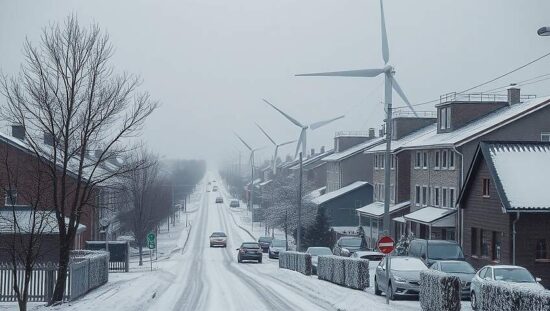Energy consumption in Germany has seen an unexpected and significant increase in the first three months of 2025, according to the Energy Balance Association. The organization estimates a 5.5 percent increase in energy consumption, amounting to 3,151 petajoules (PJ) or 107.5 million tons of standard coal equivalent, compared to the same period last year.
The current energy consumption pattern has been influenced by the substitution of reduced wind and hydroelectric power due to unfavorable weather conditions with fossil energy sources. The lower efficiency of thermal power plants compared to the use of renewable energy led to an increase in primary energy consumption. Additionally, the colder weather in February, particularly compared to the same period last year, resulted in a higher demand for heat energy.
If the weather effect is excluded, the energy consumption would have increased by only 3.5 percent, according to the association. The slow economic development and the absence of a public holiday last year also had a mitigating effect on the increase in energy consumption.
The different price developments for individual energy sources had a “differential impact” on the consumption pattern, the association noted. Lower import prices for crude oil encouraged more fuel consumption in the transportation sector and prompted many consumers to stock up on heating oil reserves. The lower import price for coal improved the competitiveness of coal on the electricity market, while the increase in natural gas prices was reflected in higher heat and production costs, as well as a rise in electricity prices.
The consumption of mineral oil increased by 4.0 percent in the first three months of the year, with gasoline consumption rising by 5.0 percent, diesel fuel consumption by 2.6 percent and jet fuel consumption decreasing by 0.8 percent. The delivery of refined petroleum products to the chemical industry increased by 3.7 percent. The sale of light heating oil rose significantly by more than 20 percent, as many consumers took advantage of lower prices to stock up on reserves.
The consumption of natural gas increased by 11.6 percent in the first quarter of the year, driven primarily by the cold weather in February, which led to a significant increase in gas demand for heating purposes. The use of natural gas for power generation also increased strongly and contributed to balancing the reduced output from wind and hydroelectric power. Industrial sectors with high natural gas consumption also contributed to the increase in consumption.
The consumption of hard coal was about 5 percent higher in the first three months of the year compared to the same period last year. The use of hard coal in power plants for electricity generation increased by 33 percent due to the decline in the input of wind and hydroelectric power, while the sale to the iron and steel industry decreased by 14 percent due to the reduced production of raw iron.
In the first quarter of 2025, the use of brown coal in Germany increased by 6.7 percent compared to the same period last year, the association reported. This development primarily reflects the increased use in power plants of the general supply, driven by the significantly lower output of electricity from wind and hydroelectric power, which was compensated for by the increased use of conventional energy sources.
In the first quarter of 2025, Germany’s electricity imports increased by more than 15 percent to 19 billion kilowatt-hours (billion kWh). Exports decreased by 5.6 percent to 16.2 billion kWh, resulting in an import surplus of nearly 2.8 billion kWh or 10 PJ.
The contribution of renewable energy sources to the energy mix was 3.2 percent lower in the first quarter of 2025 compared to the same period last year. The lack of wind and the dry weather reduced the electricity generation from wind by 30 percent and from water by 23 percent. A high number of sunny hours led to a 24 percent increase in photovoltaic power generation. The use of renewable energy in heating also increased slightly due to the weather.
The increase in the use of fossil fuels for power generation and heat supply is expected to lead to a 7 percent or approximately 11 million ton increase in the energy-related CO2 emissions, according to the association’s preliminary calculations.





